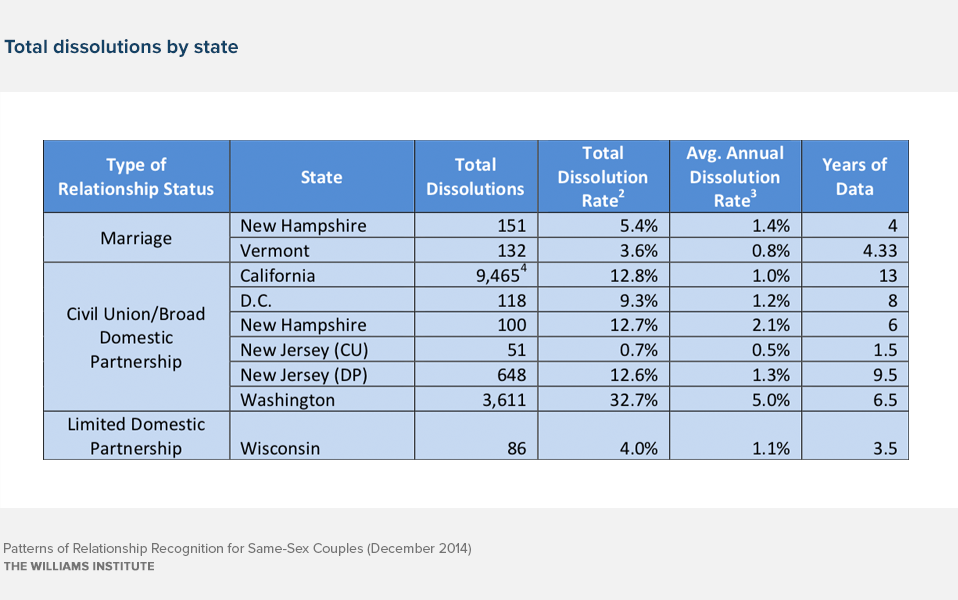Now that same-sex couples have the ability to marry or enter some other form of legal relationship in many states, we also see that couples sometimes dissolved those legal relationships. Administrative data from two states shows that same-sex couples end their marriages at a rate of 1.1% annually, on average, and an average of 1.6% of couples dissolve their legal relationships if a broader set of states is included. This rate is slightly lower than the annual rate of divorce among married different-sex couples.
States that offer legal recognition to same-sex couples vary in how recognized couples can dissolve their legal relationships. Where marriage is allowed, same-sex couples can end their relationships through divorce. In the case of marriage-like statuses, such as civil unions and broad domestic partnerships, couples must generally go through a dissolution proceeding similar to a divorce. For limited recognition statuses, couples can usually terminate their relationship by filing a notice of dissolution with the state. Administrative agencies in some states maintain records of divorces and terminations by same-sex couples.
In early 2014, the Williams Institute collected administrative data on marriages, civil unions, and domestic partnerships of same-sex couples in the 23 states that offered these statuses at the time data collection began. Two states provided data on divorces: New Hampshire and Vermont. Six states provided data on civil union and domestic partnership terminations: California, D.C, New Hampshire, New Jersey, Washington, and Wisconsin.
The table presents data collected from New Hampshire and Vermont and shows that a total of 5.4% of New Hampshire couples and 3.6% of same-sex couples in Vermont divorced in the first four years or so of marriage equality. That corresponds to an average rate of 1.1% annually for the two states. This is slightly lower than the annual rate of divorce among different-sex couples, which is about 2% annually.
Analyses of data on the dissolution of civil unions and domestic partnerships also find lower overall rates when compared to the rate of divorce among different-sex couples. The average dissolution rate for non-marital relationships was 1.7% annually across the six states that provided such data.
Overall, the average for any kind of legal relationship was 1.6% per year in these eight states.
